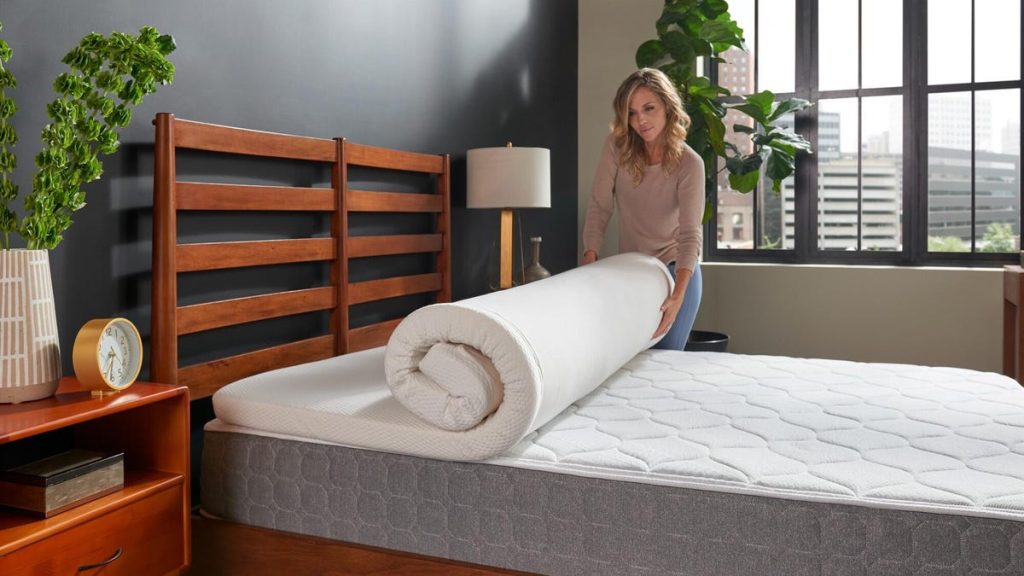This article explores the world of cooling mattress toppers, a solution for those who struggle with overheating during sleep. It emphasizes that while many products claim cooling properties, not all deliver on this promise. The article details the rigorous testing process employed by sleep experts who evaluated approximately 300 beds and numerous toppers, focusing on factors like materials, thickness, feel, firmness, and value.
The Saatva Cooling Graphite Mattress Topper emerges as the top recommendation. This 3-inch topper utilizes graphite to draw heat away from the body, providing a comfortable, medium-firm sleep surface suitable for a wide range of individuals. While not creating an icy sensation, its effective heat dissipation addresses the primary concern of most hot sleepers. The topper also features straps to prevent shifting and is treated to resist bacteria, mold, and mildew growth. However, it comes at a premium price and requires spot cleaning.
Several other cooling mattress toppers and pads are reviewed, catering to diverse needs and preferences. The Nolah Mattress Topper stands out for its durability and quilted organic cotton cover, which enhances breathability and moisture-wicking, although it doesn’t actively cool. The Tempur-Adapt + Cooling Mattress Topper, known for its pressure-relieving qualities, is recommended for back pain sufferers, offering a cool-to-the-touch sensation and a supportive medium-firm feel. The Nest Bedding Cooling Mattress Topper employs a unique bubbled Energex Foam for enhanced airflow and a neutral-foam feel.
The PlushBeds 100% Natural Talalay Latex Topper utilizes the natural cooling properties of latex, providing an open-cell structure for heat redistribution and hypoallergenic benefits. It comes in various firmness and thickness options. The Brooklinen Down Alternative Topper, a budget-friendly choice, provides a soft, breathable, and hypoallergenic option, though it’s thinner and functions more like a mattress pad. The Nature’s Sleep Mattress Topper, encased in a soft cover and featuring AirFlow Gel Memory Foam, is a more affordable option offering effective cooling and pressure relief for all sleeping positions.
The GhostBed Memory Foam Topper features a zoned support design with varying textures and firmness levels, promoting airflow and contouring to the body. The Cozy Earth Mattress Pad, crafted from bamboo-derived viscose, offers temperature regulation and a hypoallergenic design, though it doesn’t change the bed’s feel significantly. The Brooklyn Bedding Luxury Cooling Mattress Protector, inspired by a cooling mattress, offers cooling, waterproof, and hypoallergenic protection but doesn’t alter bed firmness. Finally, the Cool Flash Pad Cooling Body Pad, a single-person cooling pad, provides pressure-activated cooling for localized relief, ideal for hot flashes or fevers.
The article emphasizes the comprehensive testing methodology used to evaluate these toppers. The experts considered firmness and feel, crucial factors influenced by individual sleep positions and preferences. Cooling performance was also assessed, distinguishing between products that actively cool and those that primarily dissipate heat. Price and warranty information were also taken into account, ensuring a range of options for different budgets and providing consumer protection.
When shopping for a cooling mattress topper, the article recommends considering the material, with options ranging from memory foam to natural latex. Thickness and firmness are also crucial for achieving the desired level of comfort and support. The presence of specific cooling features, such as phase-change materials or cooling gels, should be evaluated. Finally, cleaning instructions should be noted, as most toppers require spot cleaning, while some offer removable, washable covers.
Beyond mattress toppers, the article briefly discusses other cooling sleep products, including cooling mattresses, sheets, pillows, and the high-tech Eight Sleep Pod. It also clarifies the distinctions between cooling pads, protectors, and toppers, highlighting their different functions and thicknesses. The article concludes with a FAQ section addressing common questions about mattress toppers, their effectiveness, cooling mechanisms, and methods to prevent sliding.










